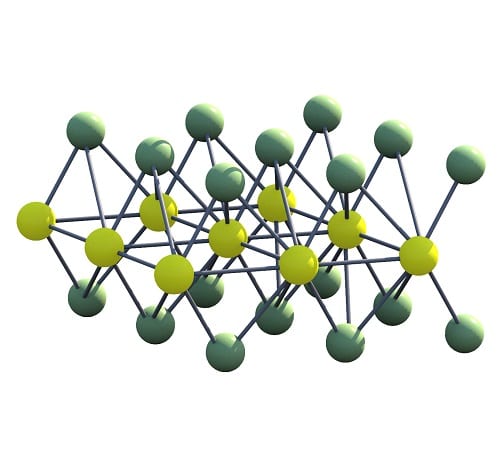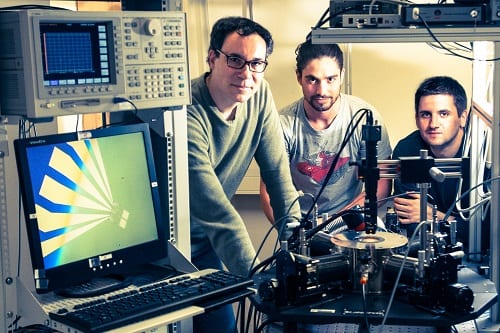It does not get any thinner than this: The novel material graphene consists of only one atomic layer of carbon atoms and exhibits very special electronic properties. As it turns out, there are other materials too, which can open up intriguing new technological possibilities if they are arranged in just one or very few atomic layers.
Researchers at the Vienna University of Technology have now succeeded for the first time in creating a diode made of tungsten diselenide. Experiments show that this material may be used to create ultrathin flexible solar cells. Even flexible displays could become possible.
At least since the Nobel Prize in physics was awarded in 2010 for creating graphene, the “2D crystals” made of carbon atoms have been regarded as one of the most promising materials in electronics. In 2013, graphene research was chosen by the EU as a flagship-project, with a funding of one billion Euros. Graphene can sustain extreme mechanical strain and it has great opto-electronic properties. With graphene as a light detector, optical signals can be transformed into electric pulses on extremely short timescales.
For building solar cells, however, graphene is not well suited. Therefore, Thomas Mueller and his team started to look for other materials, which, similarly to graphene, can arranged in ultrathin layers, but have even better electronic properties.
 The material of choice was tungsten diselenide. It consists of one layer of tungsten atoms, which are connected by selenium atoms above and below the tungsten plane. The material absorbs light, much like graphene, but in tungsten diselenide, this light can be used to create electrical power. 95% of the light just passes through – but a tenth of the remaining five percent, which are absorbed by the material, are converted into electrical power.
The material of choice was tungsten diselenide. It consists of one layer of tungsten atoms, which are connected by selenium atoms above and below the tungsten plane. The material absorbs light, much like graphene, but in tungsten diselenide, this light can be used to create electrical power. 95% of the light just passes through – but a tenth of the remaining five percent, which are absorbed by the material, are converted into electrical power.
A larger portion of the incident light can be used if several ultrathin layers are stacked on top of each other – but sometimes the high transparency can be a useful side effect. “We are envisioning solar cell layers on glass facades, which let part of the light into the building while at the same time creating electricity”, says Thomas Mueller.
We will see if tungsten diselenide play an important role in materials science, just like graphene has in the last couple of years.

















